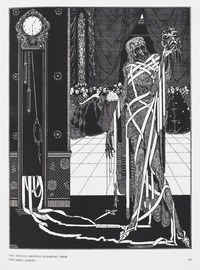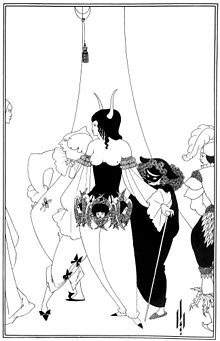
"The Pit and the Pendulum" is a short story by American writer Edgar Allan Poe and first published in 1842 in the literary annual The Gift: A Christmas and New Year's Present for 1843. The story is about the torments endured by a prisoner of the Spanish Inquisition, though Poe skews historical facts. The narrator of the story describes his experience of being tortured. The story is especially effective at inspiring fear in the reader because of its heavy focus on the senses, such as sound, emphasizing its reality, unlike many of Poe's stories which are aided by the supernatural. The traditional elements established in popular horror tales at the time are followed, but critical reception has been mixed. The tale has been adapted to film several times.

A masquerade ball is a special kind of formal ball which many participants attend in costume wearing masks. Less formal "costume parties" may be a descendant of this tradition. A masquerade ball usually encompasses music and dancing. These nighttime events are used for entertainment and celebrations.

"A Descent into the Maelström" is an 1841 short story by American writer Edgar Allan Poe. In the tale, a man recounts how he survived a shipwreck and a whirlpool. It has been grouped with Poe's tales of ratiocination and also labeled an early form of science fiction.

"The Tell-Tale Heart" is a short story by American writer Edgar Allan Poe, first published in 1843. It is related by an unnamed narrator who endeavors to convince the reader of the narrator's sanity while simultaneously describing a murder the narrator committed. The victim was an old man with a filmy pale blue "vulture-eye", as the narrator calls it. The narrator emphasizes the careful calculation of the murder, attempting the perfect crime, complete with dismembering the body in the bathtub and hiding it under the floorboards. Ultimately, the narrator's actions result in hearing a thumping sound, which the narrator interprets as the dead man's beating heart.
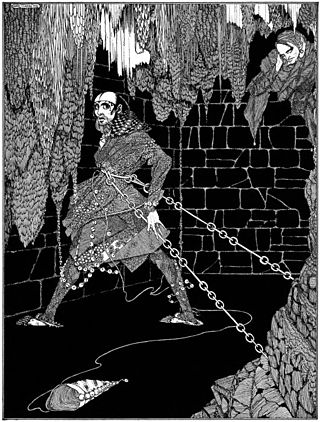
"The Cask of Amontillado" is a short story by the American writer Edgar Allan Poe, first published in the November 1846 issue of Godey's Lady's Book. The story, set in an unnamed Italian city at carnival time, is about a man taking fatal revenge on a friend who, he believes, has insulted him. Like several of Poe's stories, and in keeping with the 19th-century fascination with the subject, the narrative follows a person being buried alive – in this case, by immurement. As in "The Black Cat" and "The Tell-Tale Heart", Poe conveys the story from the murderer's perspective.
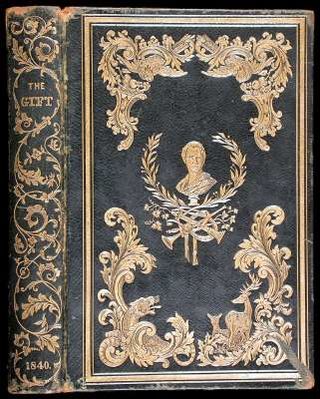
"William Wilson" is a short story by American writer Edgar Allan Poe, first published in 1839 in The Gift, with a setting inspired by Poe's formative years on the outskirts of London. The tale features a doppelgänger. It also appeared in the 1840 collection Tales of the Grotesque and Arabesque, and has been adapted several times.
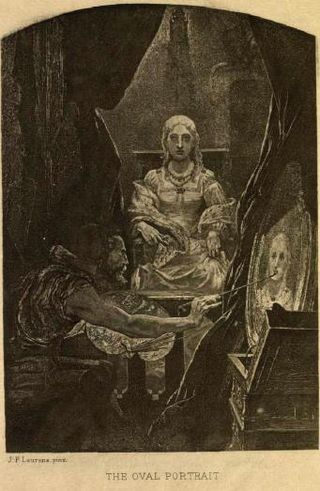
"The Oval Portrait" is a horror short story by American writer Edgar Allan Poe, involving the disturbing circumstances of a portrait in a château. It is one of his shortest stories, filling only two pages in its initial publication in 1842.

The Masque of the Red Death is a 1964 horror film directed by Roger Corman and starring Vincent Price. The story follows a prince who terrorizes a plague-ridden peasantry while merrymaking in a lonely castle with his jaded courtiers. The screenplay, written by Charles Beaumont and R. Wright Campbell, was based upon the 1842 short story of the same name by American author Edgar Allan Poe, and incorporates a subplot based on another Poe tale, "Hop-Frog". Another subplot is drawn from Torture by Hope by Auguste Villiers de l'Isle-Adam.

"Hop-Frog" is a short story by American writer Edgar Allan Poe, first published in 1849. The title character, a person with dwarfism taken from his homeland, becomes the jester of a king particularly fond of practical jokes. Taking revenge on the king and his cabinet for the king's striking of his friend and fellow dwarf Trippetta, he dresses the king and his cabinet as orangutans for a masquerade. In front of the king's guests, Hop-Frog murders them all by setting their costumes on fire before escaping with Trippetta.

American poet and short story writer Edgar Allan Poe has had significant influence in television and film. Many are adaptations of Poe's work, others merely reference it.

Edgar Allan Poe has appeared in popular culture as a character in books, comics, film, and other media. Besides his works, the legend of Poe himself has fascinated people for generations. His appearances in popular culture often envision him as a sort of "mad genius" or "tormented artist", exploiting his personal struggles. Many depictions of Poe interweave elements of his life with his works, in part due to Poe's frequent use of first-person narrators, suggesting an erroneous assumption that Poe and his characters are identical.

Radio Tales is an American series of radio drama which premiered on National Public Radio on October 29, 1996. This series adapted classic works of American and world literature such as The War of the Worlds, Twenty Thousand Leagues Under the Sea, Beowulf, Gulliver's Travels, and the One Thousand and One Nights. The series was co-produced by Winnie Waldron and Winifred Phillips. Waldron created the series and served as on-air host. Phillips composed music for the series.
Wendy Pini's Masque of the Red Death is a webcomic by the comic creator Wendy Pini.
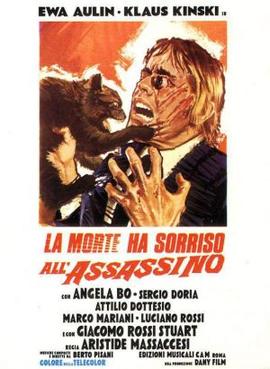
Death Smiles on a Murderer is a 1973 Italian horror film directed by Joe D'Amato and starring Ewa Aulin, Klaus Kinski and Luciano Rossi.
Edgar Allan Poe's 1842 short story "The Masque of the Red Death" has been depicted and referenced numerous times in popular culture.
"The Masque of the Red Death" is an 1842 short story by Edgar Allan Poe.

The Masque of the Red Death was an original theatre production by British theatre company Punchdrunk, in collaboration with the Battersea Arts Centre that ran from September 2007 to April 2008

Masque of the Red Death is a 1989 American horror film produced by Roger Corman, and directed by Larry Brand, starring Adrian Paul and Patrick Macnee. The film is a remake of the 1964 picture of the same name which was directed by Roger Corman. The screenplay, written by Daryl Haney and Larry Brand, is based upon the classic 1842 short story of the same name by American author Edgar Allan Poe, concerning the exploits of Prince Prospero, who organizes a bal masqué in his castle while the peasants of his fiefdom die from the plague in great numbers.
Prospero's Rooms is a single-movement orchestral composition by the American composer Christopher Rouse. The work was commissioned by the New York Philharmonic, for which Rouse was composer-in-residence, and was completed in 2011. The title comes from the Edgar Allan Poe short story "The Masque of the Red Death," in which the main character Prince Prospero and his fellow aristocrats try to escape the ravages of a plague known as the "Red Death" by locking themselves away from the outside world during a masquerade ball.

Mask of the Red Death is a 1969 animated short film by Pavao Štalter and Branko Ranitović for Zagreb Film. It is an adaptation of Edgar Allan Poe's The Masque of the Red Death.
